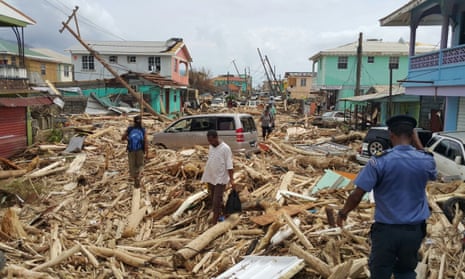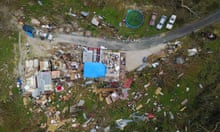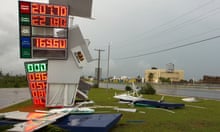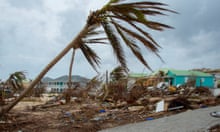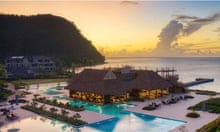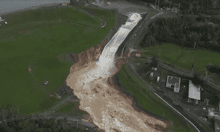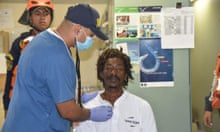Dominica – the first island hit by the full category-five force of Hurricane Maria – is “in a daze”, officials have said, cut off from its Caribbean neighbours in the wake of a storm that destroyed properties, silenced communications and cut power and running water.
Seven people have so far been confirmed dead in Dominica but that toll is expected to rise as rescue teams make their way to inaccessible parts of the island.
Hartley Henry, an adviser to the prime minister, Roosevelt Skerrit, said there had been a “tremendous loss of housing and public buildings”. There was no electricity and virtually no means of communicating with the outside world, he said.
Henry said he had spoken to Skerrit – who had to be rescued from his flooded residence during the hurricane – via satellite phone. “He and family are fine: Dominica is not,” he said.
“The main general hospital took a beating. Patient care has been compromised. Many buildings serving as shelters lost roofs, which means that an urgent need now is tarpaulins and other roofing materials.
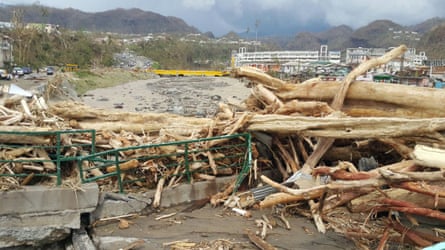
“It’s difficult to determine the level of fatalities but so far seven are confirmed as a direct result of the hurricane. That figure, the prime minister fears, will rise as he wades his way into the rural communities.”
Some districts were reporting “total destruction” of homes, roads and crops, Henry said. “In summary, the island has been devastated.”
A CNN crew who flew over Dominica on Wednesday reported: “Nearly every tree was touched – thousands snapped and strewn across the landscape – and the island was stripped of vegetation. The rainforests appear to have vanished.
“The breadth of the destruction is staggering – intact or untouched homes hard to find amid the chaos.”
The airport and sea ports are closed, although Henry said it was hoped a landing strip could be opened within days to allow relief teams and supplies to reach the island. Recovery efforts are being coordinated from the nearby islands of St Lucia and Antigua.
Philmore Mullin, head of Antigua and Barbuda’s National Office of Disaster Services, told CNN the only power available on the island was from emergency generators and car batteries. “Damage is severe and widespread. We know of casualties, but not in detail. We’ve heard of many missing but we just don’t know much at the moment.”
Ross University school of medicine, which is based in Dominica, said it would being to evacuate its students – more than 80% of whom are US citizens, with close to 10% from Canada – by boat to St Lucia on Thursday, “weather permitting”.
Ronald Jackson, the executive director of the Caribbean Disaster and Emergency Management Agency, said staff had managed to guide helicopters to Dominica to deliver some food, water and shelter materials on Wednesday.
In an interview with Jamaica’s RJR News, Jackson said the agency was planning to drop people into remote communities with satellite phones because many areas were completely inaccessible. Communications towers were snapped by winds of up to 160mph (260km/h).
The official death toll from Hurricane Maria is 10, with two deaths confirmed on the French island of Guadeloupe, and one so far in Puerto Rico. There has not yet been word of casualties from St Croix, in the US Virgin Islands, which the storm swept past in the early hours of Wednesday, and the number of fatalities could rise in Puerto Rico, which took a direct hit. The capital, San Juan, has suffered catastrophic flash flooding and the entire island has lost electricity.
Puerto Rico’s governor, Ricardo Rosselló – who called the hurricane “nothing short of a major disaster” – said one man had been killed when he was struck by a piece of debris in high winds.
“When we are able to go outside, we are going to find our island destroyed,” Abner Gomez, the director of the island’s emergency management agency, was quoted as saying by El Nuevo Dia newspaper.
It was the strongest hurricane to make landfall in Puerto Rico for almost a century. In 1928, the San Felipe Segundo hurricane killed more than 300 people.
Maria dipped to category-two strength as it moved away from Puerto Rico towards the Dominican Republic, but the US National Hurricane Center warned it could yet regain strength. The Dominican Republic, the Turks and Caicos Islands and the south-eastern Bahamas remain under hurricane warnings.
Associated Press and Reuters contributed to this report
